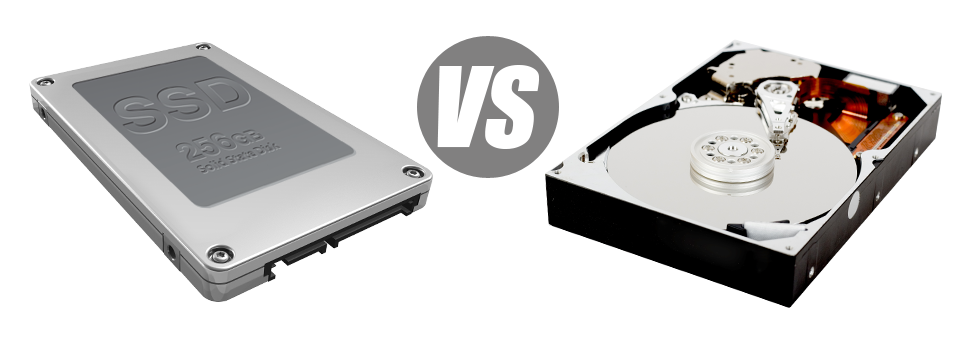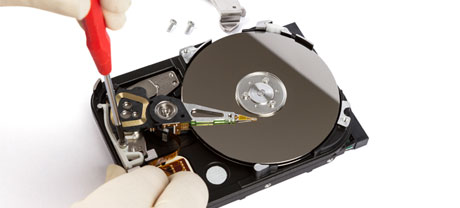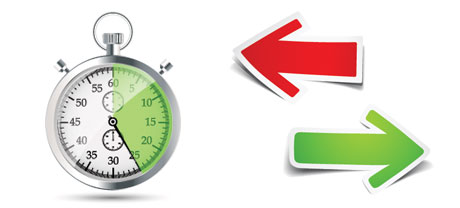When you have a web site or maybe an web application, speed is essential. The swifter your site works and also the swifter your web apps operate, the better for everyone. Given that a web site is just a selection of data files that interact with one another, the systems that store and access these files play a huge role in web site operation.
Hard disks, or HDDs, have been, right up until recent times, the most trustworthy devices for storing information. However, lately solid–state drives, or SSDs, have already been becoming more popular. Have a look at our evaluation chart to view whether HDDs or SSDs are more appropriate for you.
1. Access Time
SSD drives give a fresh & progressive method to data safe–keeping based on the use of electronic interfaces rather than any sort of moving components and rotating disks. This different technology is noticeably faster, enabling a 0.1 millisecond data file access time.
HDD drives still make use of the very same basic data file access technology which was actually created in the 1950s. Despite the fact that it was vastly enhanced since then, it’s sluggish in comparison with what SSDs are offering to you. HDD drives’ data file access rate varies in between 5 and 8 milliseconds.
2. Random I/O Performance
Because of the brand–new significant file storage approach embraced by SSDs, they feature a lot quicker data access speeds and better random I/O performance.
All through My Hosting Beats’s trials, all SSDs revealed their ability to work with at the very least 6000 IO’s per second.
Having an HDD drive, the I/O performance progressively increases the more you apply the drive. Nevertheless, as soon as it actually reaches a specific cap, it can’t get speedier. And due to the now–old concept, that I/O limitation is significantly lower than what you can have having an SSD.
HDD can only go so far as 400 IO’s per second.
3. Reliability
SSD drives are built to include as less rotating parts as possible. They utilize an identical technique like the one used in flash drives and are also much more reliable as compared to standard HDD drives.
SSDs offer an normal failing rate of 0.5%.
With an HDD drive to operate, it should rotate a pair of metallic hard disks at more than 7200 rpm, keeping them magnetically stabilized in the air. They have a great deal of moving elements, motors, magnets as well as other gadgets stuffed in a tiny place. Consequently it’s no surprise the common rate of failure of the HDD drive ranges somewhere between 2% and 5%.
4. Energy Conservation
SSD drives work nearly silently; they don’t produce surplus warmth; they don’t require supplemental cooling methods and then take in less electricity.
Trials have established that the common electric power consumption of an SSD drive is somewhere between 2 and 5 watts.
HDD drives are well known for getting loud; they are at risk from getting too hot and when you have several hard drives in a single web server, you have to have a different air conditioning unit just for them.
As a whole, HDDs consume in between 6 and 15 watts.
5. CPU Power
Because of SSD drives’ higher I/O efficiency, the main web server CPU can easily process file queries a lot quicker and save time for different procedures.
The normal I/O delay for SSD drives is exactly 1%.
If you use an HDD, you will need to dedicate extra time watching for the results of your file call. As a result the CPU will stay idle for much more time, looking forward to the HDD to react.
The regular I/O delay for HDD drives is approximately 7%.
6.Input/Output Request Times
It is time for several real–world instances. We, at My Hosting Beats, produced a detailed system backup on a web server only using SSDs for data storage purposes. During that procedure, the regular service time for an I/O query remained under 20 ms.
Using the same web server, however, this time built with HDDs, the outcome were very different. The average service time for an I/O query fluctuated between 400 and 500 ms.
7. Backup Rates
You are able to feel the real–world advantages of having SSD drives on a daily basis. By way of example, on a hosting server loaded with SSD drives, a full back up can take only 6 hours.
On the other hand, on a hosting server with HDD drives, a comparable data backup could take 3 to 4 times as long to complete. A full backup of any HDD–equipped hosting server usually takes 20 to 24 hours.
With My Hosting Beats, you can find SSD–operated web hosting services at affordable prices. The cloud hosting plans as well as our VPS plans contain SSD drives by default. Apply for an website hosting account along with us and observe how your web sites will become better without delay.
Hepsia
- Live Demo
Service guarantees
- Each one of our Virtual Private Servers is installed for you cost–free. 99.9% network uptime. Full root and SSH access.
Compare our prices
- Very easily compare the parameters and features provided by all of our Virtual Private Servers. Find out which VPS setup provides you with everything that you’ll need to handle your dynamic web presence with ease.
- Compare our hosting plans
Contact Us
- Our representatives are available for you day and night to answer any kind of inquiries in relation to our VPS platform. 1–hour reply time frame warranty.















